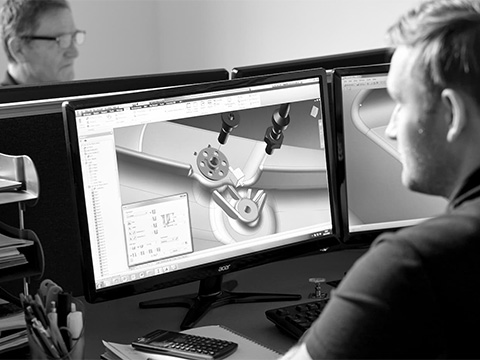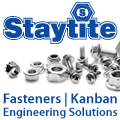
Posted to News on 13th Jun 2025, 11:00
Choosing a fastening material? Think beyond the fastener
An enquiry to bigHead from an automotive customer on saving weight opened a wider conversation about material compatibility, assembly practices, and how fastening works as a system.

When lightweighting is a constant pressure, aluminium might seem like an ideal fastening material. Especially in automotive design, where every gram counts. But changing one small detail can introduce unforeseen challenges. Challenges that can easily go unnoticed until you take a system-level view.
That's what happened when an automotive customer recently asked bigHead if it could replace its current steel bigHead fasteners with aluminium versions to save weight on an interior composite frame. It was a logical question. But sometimes, shaving off a few grams just isn't worth the downstream cost.
This customer was deep into the development of a new composite frame for an interior feature in its vehicle. During early trials, it had been using a steel bigHead fastener with success. But with lightweighting front of mind, it began exploring alternatives. Aluminium naturally came up. The thinking was sound: it's light and widely used in vehicle components. So could swapping fastener materials help the company achieve its weight targets?
From a materials standpoint, yes. But from a system standpoint, bigHead saw two main concerns. The first was mixed material compatibility: the team intended to keep using its existing carbon steel screws and washers. But pairing aluminium and steel in the same fastening stack can trigger galvanic corrosion, particularly in environments with fluctuating humidity or temperature.
In a vehicle, that kind of degradation may go unseen until an end user or technician removes a panel and finds corroded and weakened fixings, or that the assembly has seized.
The second consideration was tightening torque deviations: torque settings in automotive assembly are tightly controlled. Changing just one component - like the fastener base material - would invalidate the known torque profile for that connection.
Introducing a single aluminium fastener into an otherwise steel-based system would have required new torque validation and re-documentation for a single part. For a complex, global production line, that's a logistical headache. And it's exactly the kind of challenge that tends to appear late in the process, when it's harder (and costlier) to resolve.
The customer was focused - understandably - on the component design and composite integration. Assembly and service considerations are easy to overlook during the early-phase dialogue.
That's where bigHead can help. The company doesn't just see fasteners as a single component; rather, it sees fastening as a system that needs to work across design, manufacture and assembly. The company's role is to support teams to make those cross-functional connections, and spot unintended consequences early, when changes are easiest and least costly to make.
Talking through these trade-offs, the customer quickly decided that the corrosion risk and torque value changes outweighed the benefits. The added complexity just wasn't worth saving a couple of grams.
A spokesperson for the company said: "These points mean the potential risks outweigh the benefits in weight reduction. Many thanks for the time and effort in investigating the concept, but we will stick with the original steel fixings."
So, the company chose to retain the original steel bigHead fastener, which had already proven effective during R&D. The timeline stayed on track, and the solution continued to meet performance and reliability goals.
Unit 1, Black Moor Business Park
36A Black Moor Road
BH31 6BB
UNITED KINGDOM
01202 574601





